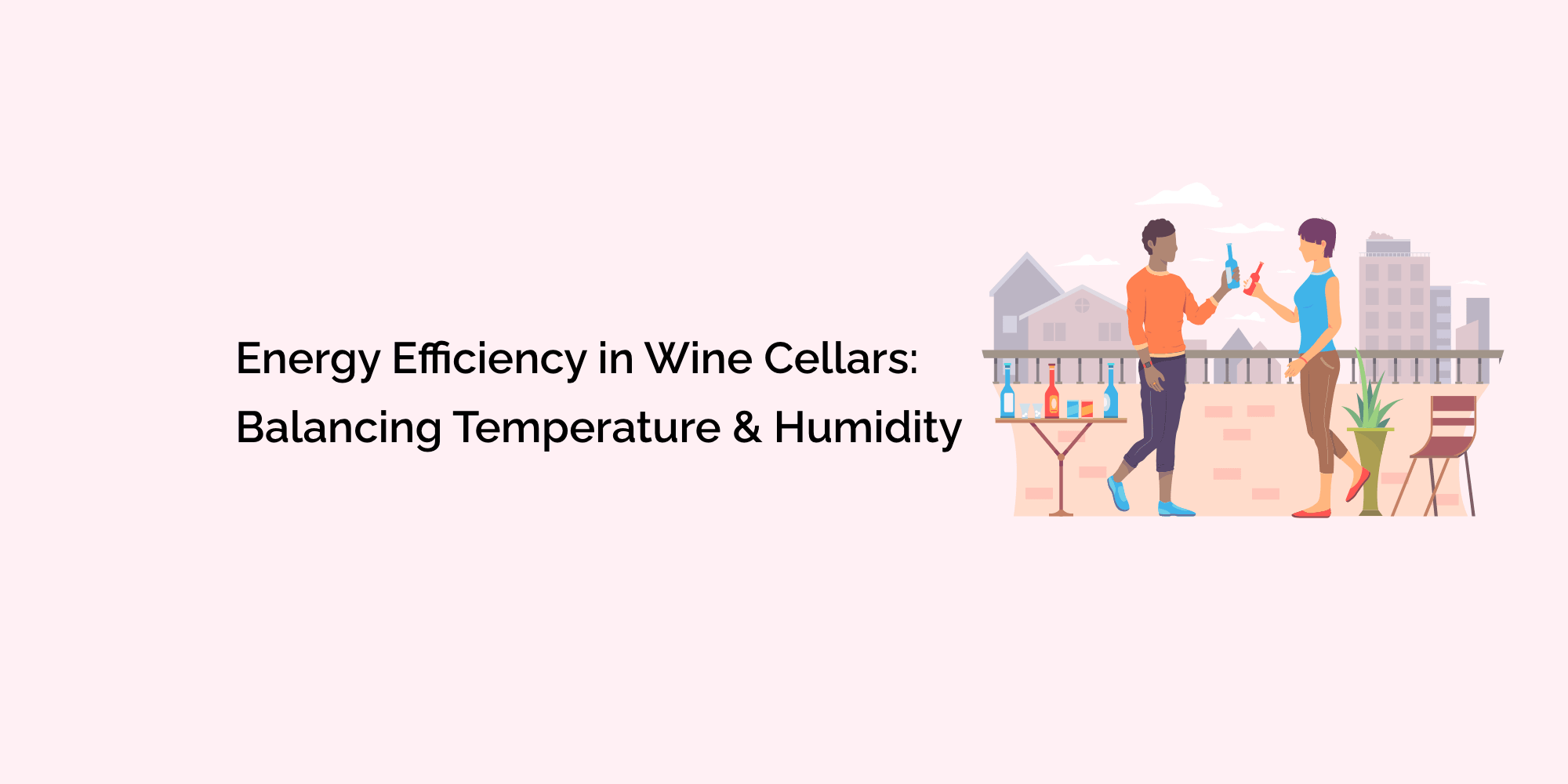Wine cellars are not only sanctuaries for wine enthusiasts but can also be energy-intensive spaces. Balancing the temperature and humidity levels in wine cellars is crucial for preserving wine and promoting energy efficiency. This detailed blog post will explore the importance of energy efficiency in wine cellars, discuss strategies for balancing temperature and humidity while minimizing energy consumption, and provide practical tips for creating an energy-efficient cellar environment.
The Importance of Energy Efficiency in Wine Cellars:
- Reducing Environmental Impact: Promoting energy efficiency in wine cellars helps reduce the environmental impact of excessive energy consumption. Wine enthusiasts can contribute to sustainability efforts by minimizing energy usage and reducing their carbon footprint.
- Cost Savings: Energy-efficient wine cellars can lead to significant cost savings in the long run. By adopting energy-saving strategies, wine enthusiasts can reduce their utility bills and invest in other aspects of their wine collection.
- Wine Preservation: Balancing temperature and humidity levels while minimizing energy consumption is essential for preserving wines' quality and aging potential. Energy-efficient practices ensure wines age gradually and develop desirable flavors and aromas.
Balancing Temperature for Energy Efficiency:
- Optimal Temperature Range: The ideal temperature range for wine cellars typically falls between 50°F and 59°F (10°C and 15°C). Maintaining this range is crucial for preserving wine, but optimizing energy usage is also essential.
- Proper Insulation: Properly insulating the wine cellar helps minimize heat transfer and reduce energy consumption. Insulate walls, ceilings, and floors using materials with high insulation properties to create a well-sealed environment.
- Efficient Cooling Systems: Investing in energy-efficient cooling systems specifically designed for wine cellars can significantly reduce energy consumption. For optimized performance, look for cooling systems with high energy efficiency ratings, advanced temperature controls, and variable speed fans.
- Intelligent Temperature Control: Utilize innovative temperature control systems that allow you to set temperature schedules and adjust settings remotely. This enables you to conserve energy by only cooling the cellar when necessary.
- Proper Ventilation: Maintain appropriate ventilation to prevent the accumulation of heat. Strategic placement of vents and fans can promote airflow and assist in temperature regulation without relying solely on cooling systems.
Balancing Humidity for Energy Efficiency:
- Optimal Humidity Range: The recommended humidity range for wine cellars is between 50% and 70%. Balancing humidity levels within this range is crucial for wine preservation while considering energy efficiency.
- Humidity Control Systems: Invest in humidity control systems that precisely control moisture levels. These systems can efficiently regulate humidity without excessive energy consumption.
- Seal Management: Regularly inspect and maintain the seals on doors and windows to prevent moisture exchange with the surrounding environment. Properly sealed entrances help maintain desired humidity levels and reduce energy waste.
- Moisture Barriers: Consider using moisture barriers on walls, floors, and ceilings to prevent moisture intrusion and maintain stable humidity levels. These barriers can also contribute to energy efficiency by minimizing heat exchange.
Additional Energy-Efficient Practices:
- LED Lighting: Replace traditional incandescent bulbs with energy-efficient LED lighting in your wine cellar. LED lights consume less energy, produce less heat, and have a longer lifespan, reducing overall energy consumption.
- Efficient Wine Racking: Organize wine racks to allow for proper airflow and circulation. Avoid overcrowding the shelves, as it can impede air movement and increase cooling requirements.
- Regular Maintenance: Perform routine maintenance of cooling systems, insulation, and humidity control systems. Properly maintained equipment operates more efficiently, reducing energy waste.
- Monitoring and Data Analysis: Implement intelligent monitoring systems that provide real-time temperature, humidity, and energy consumption data. Analyzing this data can help identify opportunities for further energy efficiency improvements.
Educating and Sharing Knowledge:
- Promoting Energy-Efficient Practices: Spread awareness about the importance of energy efficiency in wine cellars. Share knowledge and encourage fellow wine enthusiasts to adopt energy-saving strategies.
- Collaboration and Learning: Engage in conversations with wine cellar professionals, experts, and fellow wine enthusiasts to exchange ideas and learn about new energy-efficient technologies and practices.
Certainly! Here are some frequently asked questions (FAQs) about energy efficiency in wine cellars and balancing temperature and humidity:
How can I create an energy-efficient wine cellar without compromising wine quality?
To create an energy-efficient wine cellar without compromising wine quality, focus on proper insulation, energy-efficient cooling systems, intelligent temperature, humidity control, and efficient use of lighting. Regular maintenance, adequate ventilation, and strategic organization of wine racks contribute to energy efficiency while preserving wine quality.
How can I monitor temperature and humidity levels in my wine cellar?
You can monitor temperature and humidity levels in your wine cellar using digital thermometers and hygrometers designed explicitly for wine storage. Consider using intelligent monitoring systems that conveniently provide real-time data and remote access.
Are there professionals who can provide advice on energy-efficient wine cellar design?
Yes, there are professionals such as wine cellar designers and experts who can guide energy-efficient wine cellar design. They can recommend suitable cooling systems, insulation methods, and other energy-saving strategies tailored to your specific cellar and collection.
Conclusion:
Creating an energy-efficient wine cellar requires a delicate balance between temperature and humidity control while minimizing energy consumption. By implementing proper insulation, efficient cooling systems, intelligent temperature, humidity control, and additional energy-saving practices, wine enthusiasts can preserve their wines while reducing their environmental impact and cost. Balancing energy efficiency and wine preservation ensures a sustainable approach to enjoying and protecting your valuable wine collection. With a commitment to energy efficiency, wine lovers can savor their wines' flavors, aromas, and aging potential while treading lightly on the planet. Cheers to wine cellars' harmonious balance of temperature, humidity, and energy efficiency!








